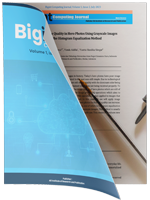ADDITIONAL MENU
Focus and Scope
Bigint Computing Journal is dedicated to advancing cutting-edge research and knowledge in the field of computing. The journal explores a broad range of topics with a focus on innovation, sustainable solutions, and the practical application of technologies in the following areas:
1. Computer Engineering:
Computer Engineering focuses on the design, development, and optimization of both hardware and software systems. This field integrates principles from electronics and computer science to create efficient, energy-saving, and high-performance systems. Professionals in computer engineering work on developing and optimizing integrated systems for a wide range of applications, such as IoT devices, embedded systems, and cloud computing platforms.
Subfields of Computer Engineering include computer architecture, embedded systems, parallel and distributed computing, hardware design, energy-efficient computing, real-time systems, systems programming, data communication systems, hardware security, and FPGA engineering.
2. Computer Science and Informatics:
Computer Science focuses on the theoretical foundations of computation and their practical applications in various domains, including algorithms, programming languages, data structures, and emerging areas like quantum computing and machine learning. Informatics extends this field by focusing on the practical implementation of computing systems to address real-world problems across multiple disciplines.
Subfields of Computer Science and Informatics cover algorithms and data structures, machine learning, quantum computing, artificial intelligence, image and video processing, data science and analytics, computational theory, computer networking, cryptography, and big data technologies.
3. Software Engineering:
Software Engineering applies engineering principles to the design, development, and maintenance of software systems. It emphasizes creating software that meets user needs with high quality, sustainability, and efficiency. Software engineering includes managing the entire software lifecycle, from requirements gathering to design, coding, testing, deployment, and maintenance.
Subfields of Software Engineering include software design, software development, software testing, software project management, agile development methodologies, requirements engineering, software maintenance, software architecture, continuous integration, and DevOps practices.
4. Information Systems:
Information Systems focuses on how organizations use and manage information systems to improve decision-making and enhance operational efficiency. This field explores the integration of technology into business processes and the transformation of data into actionable insights to drive digital innovation and automation within organizations.
Subfields of Information Systems include decision support systems, data management, enterprise resource planning (ERP), geographic information systems (GIS), digital transformation, database management systems (DBMS), business analytics, information system security management, e-government, and health information systems.
5. Information Technology:
Information Technology involves the use of computer systems and software to store, retrieve, transmit, and protect data. It encompasses the management of IT infrastructure and the development of technologies that enhance communication, security, and computational processes, particularly in areas like cloud computing, cybersecurity, and emerging technologies like 5G and the Internet of Things (IoT).
Subfields of Information Technology include IT infrastructure management, cybersecurity, cloud computing, Internet of Things (IoT), computer networking, virtualization, 5G technologies, blockchain, web application development, and distributed database systems.



